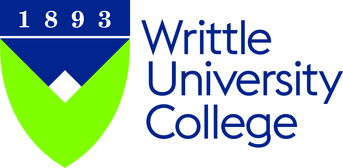The Wnt5a Receptor, Receptor Tyrosine Kinase-Like Orphan Receptor 2, Is a Predictive Cell Surface Marker of Human Mesenchymal Stem Cells with an Enhanced Capacity for Chondrogenic Differentiation.
Dickinson, Sally C, Sutton, Catherine A, Brady, Kyla, Salerno, Anna, Katopodi, Theoni, Williams, Rhys L, West, Christopher C, Evseenko, Denis, Wu, Ling, Pang, Suzanna, Ferro de Godoy, Roberta, Goodship, Allen E, Péault, Bruno, Blom, Ashley W, Kafienah, Wael and Hollander, Anthony P (2017) The Wnt5a Receptor, Receptor Tyrosine Kinase-Like Orphan Receptor 2, Is a Predictive Cell Surface Marker of Human Mesenchymal Stem Cells with an Enhanced Capacity for Chondrogenic Differentiation. Stem Cells, 35 (11). pp. 2280-2291. ISSN 1549-4918
|
Text
stem.2691.pdf - Published Version Available under License Creative Commons Attribution. Download (2MB) | Preview |
Abstract
Multipotent mesenchymal stem cells (MSCs) have enormous potential in tissue engineering and regenerative medicine. However, until now, their development for clinical use has been severely limited as they are a mixed population of cells with varying capacities for lineage differentiation and tissue formation. Here, we identify receptor tyrosine kinase-like orphan receptor 2 (ROR2) as a cell surface marker expressed by those MSCs with an enhanced capacity for cartilage formation. We generated clonal human MSC populations with varying capacities for chondrogenesis. ROR2 was identified through screening for upregulated genes in the most chondrogenic clones. When isolated from uncloned populations, ROR2+ve MSCs were significantly more chondrogenic than either ROR2-ve or unfractionated MSCs. In a sheep cartilage-repair model, they produced significantly more defect filling with no loss of cartilage quality compared with controls. ROR2+ve MSCs/perivascular cells were present in developing human cartilage, adult bone marrow, and adipose tissue. Their frequency in bone marrow was significantly lower in patients with osteoarthritis (OA) than in controls. However, after isolation of these cells and their initial expansion in vitro, there was greater ROR2 expression in the population derived from OA patients compared with controls. Furthermore, osteoarthritis-derived MSCs were better able to form cartilage than MSCs from control patients in a tissue engineering assay. We conclude that MSCs expressing high levels of ROR2 provide a defined population capable of predictably enhanced cartilage production.
| Item Type: | Article |
|---|---|
| Keywords: | Mesenchymal stem cells Tissue engineering Arthritis Cellular therapy Cell Signaling |
| Divisions: | Equine & Veterinary Physiotherapy |
| Depositing User: | Dr Roberta Blake |
| Date Deposited: | 22 Nov 2020 18:50 |
| Last Modified: | 10 Nov 2023 11:49 |
| URI: | https://writtle.repository.guildhe.ac.uk/id/eprint/15194 |
Actions (login required)
 |
Edit Item |

